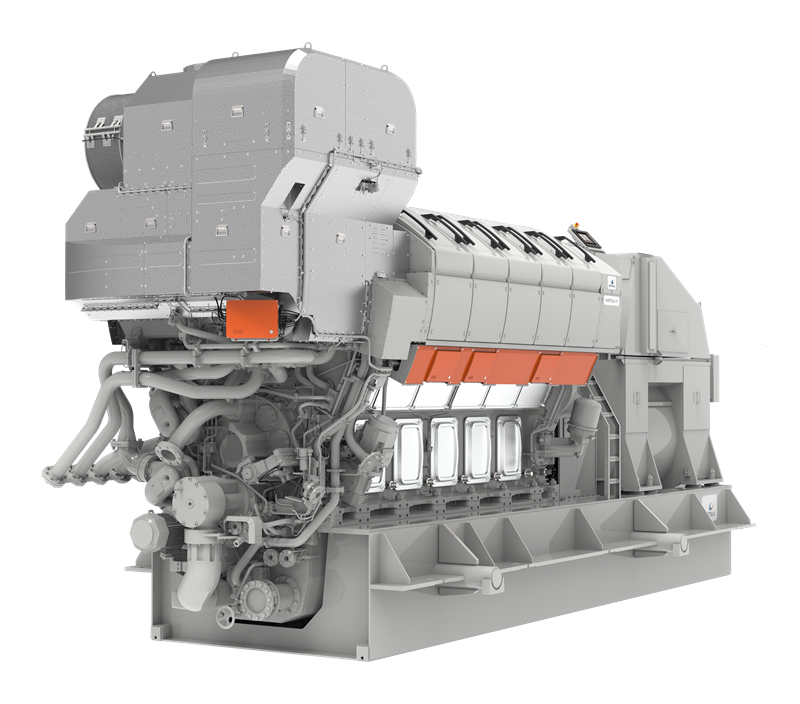Wärtsilä has introduced an ultra-low emissions version of its Wärtsilä 31DF engine. While operating on LNG, this new version can further reduce methane emissions on a 50% load point by up to 56% and nitrogen oxide (NOx) by up to 86%. On a weighted average, this technology can reduce methane emissions by 41% more than the standard Wärtsilä 31DF engine, which Wärtsilä states already has the lowest emission levels on the market.
The version, which is applied on one of the four engines on board Wasaline’s Aurora Botnia ferry, has already helped the Finnish-Swedish ferry operator further reduce the Aurora Botnia’s methane emissions by 10%. As part of the EU co-funded Green Ray and SeaTech projects, Wärtsilä piloted the ultra-low emissions concept on board the Aurora Botnia with positive results verified through an independent study conducted in December 2022 by VTT, the Technical Research Centre of Finland. Encouraged by the results, Wärtsilä has now launched the ultra-low emissions version of the Wärtsilä 31DF engine to the commercial market. This latest collaboration forms part of a long-term partnership between Wärtsilä and Wasaline to reduce emissions on board the sustainable Aurora Botnia ro-pax ferry.
Peter Ståhlberg, managing director of Wasaline, said, “We are very committed to decarbonization, and we have worked closely with Wärtsilä to make sustainable shipping a reality. It is a goal-oriented partnership that benefits both companies, as well as the industry as a whole. We have been pleased to allow the Aurora Botnia to be used as a floating laboratory, and we are excited to see the success of this latest Wärtsilä technology breakthrough.”
Launched in 2015, the Wärtsilä 31DF engine platform has been recognized for its fuel economy, high performance and minimal GHG impact. The engine, as a standard version, already meets today’s regulatory requirements. The new version will enable operators to go even further in reducing methane emissions, helping to futureproof their vessels in the longer term against potentially tightening global requirements. Additionally, improving dual fuel technology to enable methane emissions reduction will have a major impact on the long-term viability of LNG as a marine fuel.
Stefan Nysjö, vice president of power supply at Wärtsilä Marine Power, commented, “Our work around reducing methane slip and GHG emissions is part of Wärtsilä’s effort to continuously improve efficiency and reduce emissions of our products, and this innovation is one more very important step along the road to decarbonization. The building of an LNG fuel infrastructure has been an important factor in shipping’s transition toward cleaner operations, and Wärtsilä continues to create solutions that support this journey. Our focus has always been to improve and optimize existing solutions and to develop exciting new ones. With this latest introduction, we are clearly delivering on this commitment.”
Although methane slip from engines is a relatively small amount, from a percentage standpoint, it is significantly more potent than CO2 – up to 28 times greater. Across the shipping industry, cutting methane emissions is one of the most effective ways to decrease overall GHG emissions from engines over the next 10 years, complementing other efforts to reduce CO2 emissions.
Read more of the latest equipment and services updates from the electric and hybrid marine technology industry, here.




